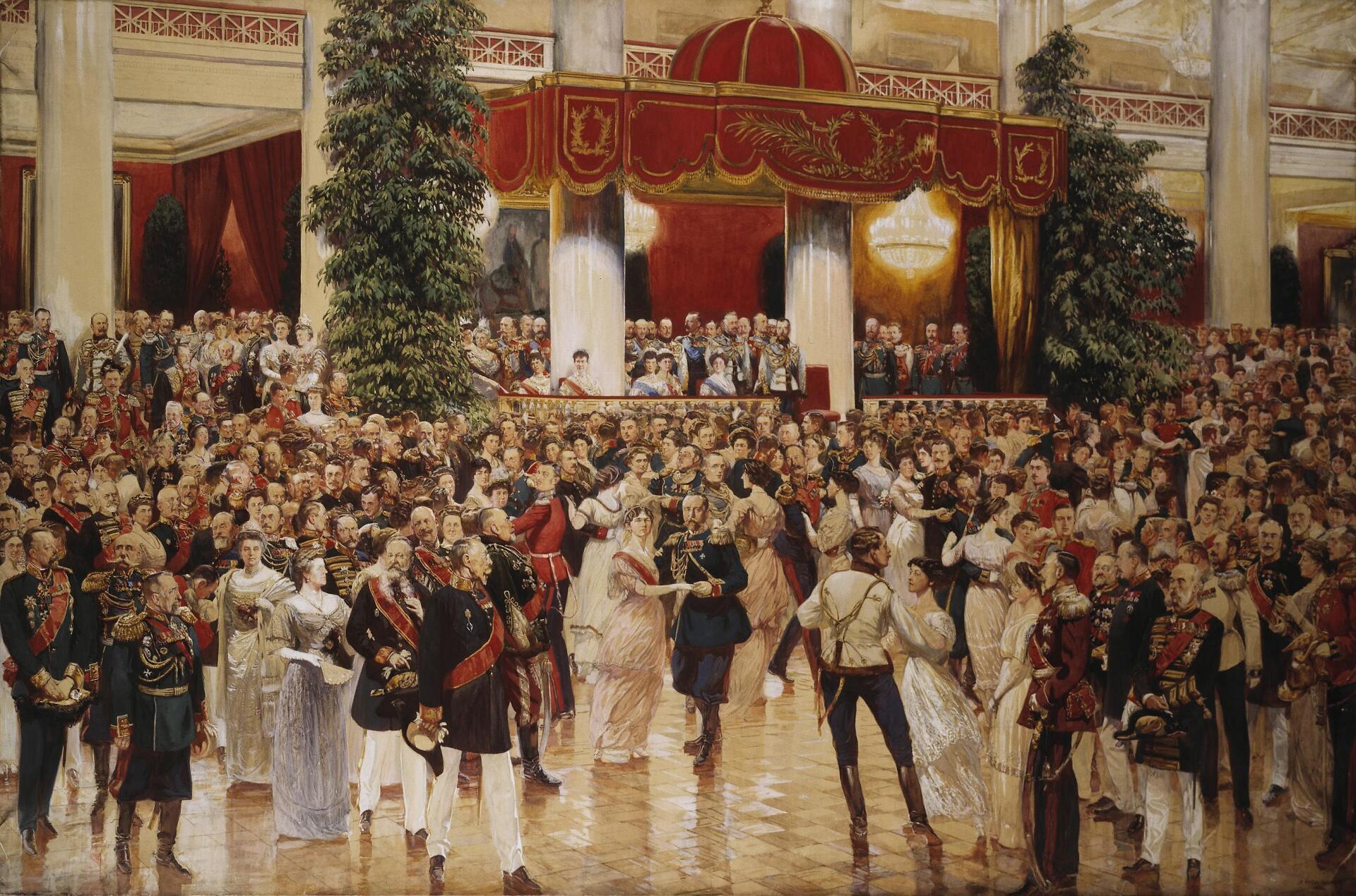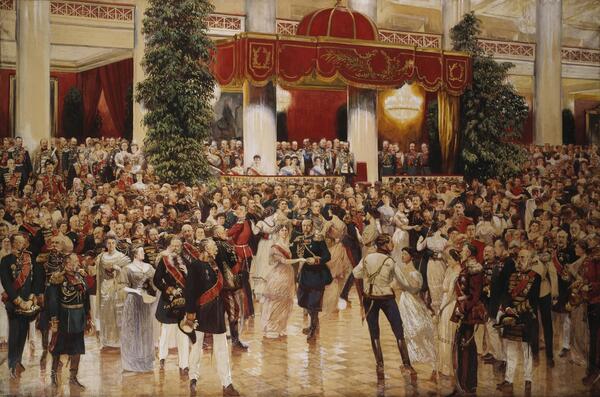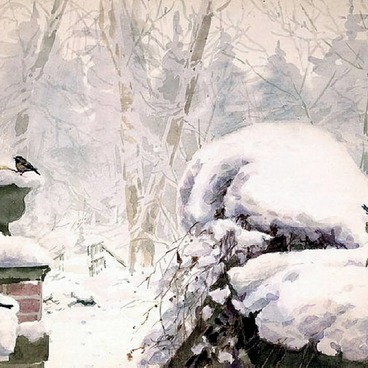On February 23, 1913, a grand ball was given at the St. Petersburg Noble Assembly on Mikhaylovskaya Street, attended by over 3,200 guests. It was timed to celebrate the 300th anniversary of the Romanov dynasty. It was the last large-scale holiday in pre-revolutionary Russia. The ball opened with a polonaise from Mikhail Glinka’s opera “A Life for the Tsar” performed by the ball orchestra of the Preobrazhensky Imperial Guard. Nicholas II danced in the first pair with the wife of the St. Petersburg district leader of the nobility, Empress Alexandra Feodorovna - with the St. Petersburg district leader of the nobility.
The painting where artist Dmitriy Kardovskiy captured the scene of the anniversary ball became one of the few large-format works by that author. The painting cannot be classified as a proper historical work, but Kardovskiy painted it based on academic multi-figure compositions, while capturing each character with photographic accuracy and psychological validity.
Members of the ruling family, headed by the imperial couple, are painted in the royal box. In the crowd of guests at the ball, one can easily recognize prominent political and state figures - from State Secretary Aleksandr Bulygin to the director of the Hermitage, Count Dmitry Tolstoy.
From the memoirs of Aleksandr Gershelman, a page of the chamber, issued in 1913 (magazine “Cadet Roll Call” No. 16 of 1976): “The ball of the St. Petersburg nobility, at which the nobles received the Tsar and His Family on the occasion of the 300th anniversary of the House of Romanovs, had a completely different character compared to the palace routine… The ruling family was a guest among its nobility, and this position, taking into account the whole solemnity of the reception, inevitably destroyed many obstacles that were mandatory when observing court etiquette. …The hall was filled not by representatives of the service nobility, but by persons for the most part not participating in court receptions. And the purpose of the meeting was different. If enters served as an assertion and an external manifestation of the power and greatness of the Tsarist Russia, then the ball of the nobles was a manifestation of the feelings of attachment of this class to the Crown and their readiness to serve until the grave to the Russian Empire…. During such balls the Ruling Family behaved with great tact, participating in joint dances and mingling with the crowd of nobles.”




